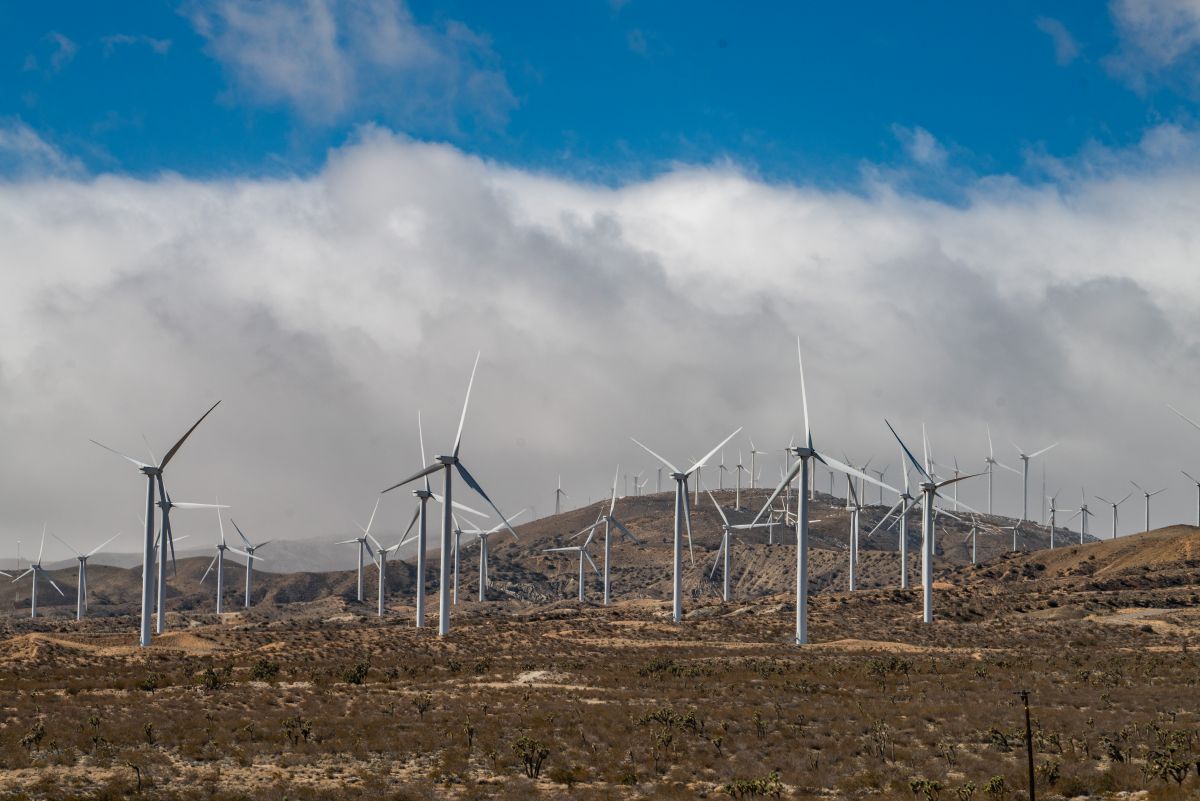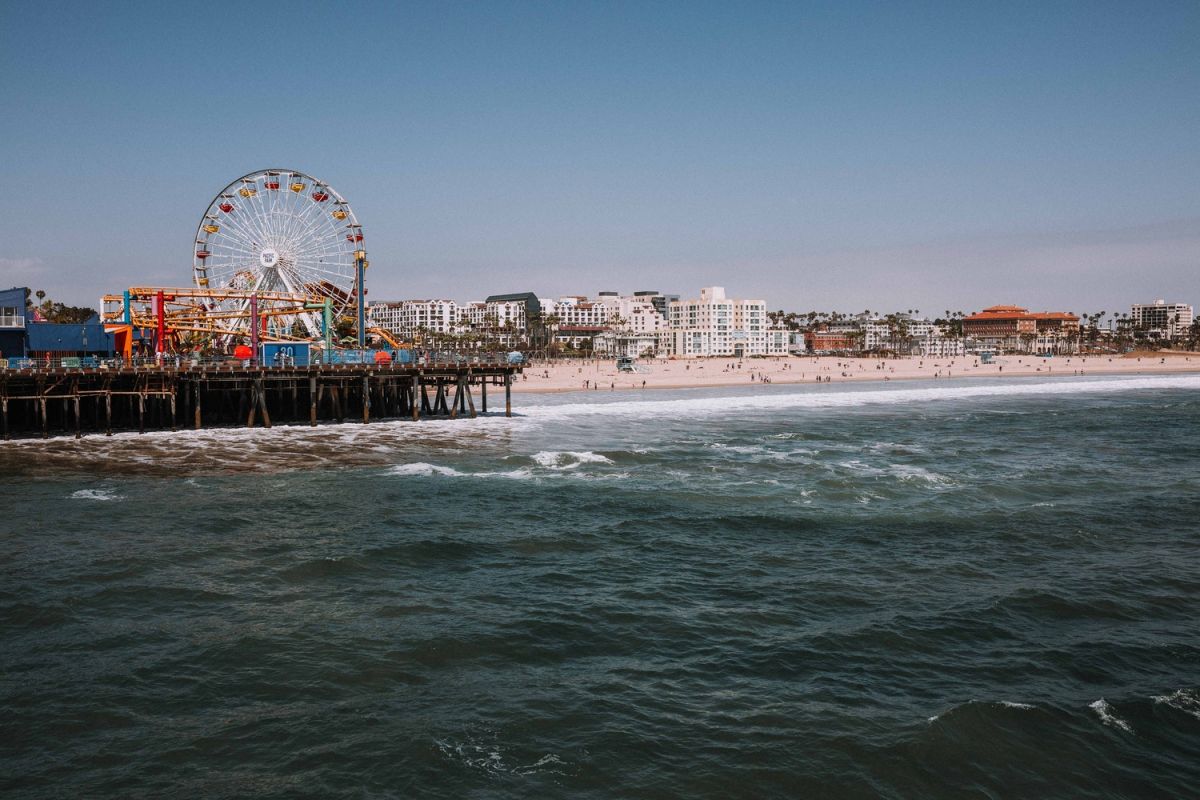Little City Thinks Big: Santa Monica’s Vision for the Environment Pays Off
Last September, California’s reaction to the U.S. withdrawal from the Paris Climate Agreement was Senate Bill 100 (SB100). This bill states that it is the policy of the state that eligible renewable energy resources and zero-carbon resources supply 100% of retail sales of electricity to California end-use costumers and 100%of electricity procured to serve all state agencies by December 31, 2045.
The Sierra Club is turning this vision into reality using its Clean Break Team, Climate Action Team, and Environment Justice Committee. The Clean Break Team advocates for a just transition from dirty fossil fuels to clean, renewable energy. The Climate Action Team promotes innovative approaches to reducing emissions. And the Environmental Justice Committee fights for those that fall victim to dirty energy’s dangers.
Backed and empowered by our Ready For 100 campaign, Californians are acting on clean air initiatives, too. In fact, on February 1st, the City of Santa Monica rolled out a 100% clean energy option for its electric power customers. They couldn’t have done this alone: this was accomplished in close partnership with Southern California’s Clean Power Alliance, a government-affiliated agency that offers electricity generated from renewable sources such as solar and wind power. California approved the establishment of these agencies, known as Community Choice Aggregators (CCAs), in 2002. Nearly 17 years later, California now has 19 CCAs, including the Clean Power Alliance.
Ted Bardacke, CPA’s Executive Director, describes CPA as a partnership with local communities: “The CPA Board of Directors is made up of city officials, and policy is guided by that board.”
CPA is now the default energy provider for residents of 29 cities, including Santa Monica, as well as unincorporated Los Angeles and Ventura counties. CPA started small, with 30,000 customers last year, added 950,000 residential customers in February, and will expand service to 100,000 business customers in May. Southern California Edison (SCE) will continue to deliver power and handle billing and customer service for CPA customers. SCE rebates and incentives will also remain in effect.
Kevin McKeown has served on Santa Monica’s City Council for more than 20 years and is also one of CPA’s elected directors. McKeown explains: “Santa Monica has always led in this area. The job we’ve done over the years, advocating for the importance of renewable energy, has paid off. We played a founding role in CPA. And we have been willing to make tough choices and put in the resources to make this happen.”
Although Santa Monica implemented a default option of 100% renewable electric energy, customers may opt for either 50% or 36% renewable energy. The cost of the 100% renewable option is just 7-9% more than the Southern California Edison (SCE) standard plan. Meanwhile, the cost of the 50% renewable energy option is 0-1% less than the SCE standard plan, and the 36% renewable option is 1-2% less.
Santa Monica citizens have shown personal commitment to fighting climate change. Unfazed by the cost, most Santa Monica residents have faced the renewable energy challenge head-on: about 95% have decided to stay with the 100% plan. Another 1.4% has chosen either the 50% or 36% renewable energy option. Only 2.9% are not participating in the CPA renewable energy program.
Santa Monica City Council member McKeown attributes Santa Monica’s success in the renewable energy arena to CPA (which he calls “a classic bootstrap operation”), long-time City Council members Denny Zane and Judy Abdo, and the ethic of Santa Monica citizens. “We’re fortunate that the residents have said ‘let’s do it,’” McKeown notes. “This is all about local control and choice. This is a way for us to actually implement the Green New Deal on a local level. In the future, CPA is going to be creating jobs near disadvantaged neighborhoods.”

According to CPA’s Ted Bardacke, “We have a big challenge in introducing competition into a market served by a monopoly for many years. We have to explain who we are and what we do. It can be confusing. But we need people to think about where their energy comes from if we are going to make progress.” CPA’s first long-term purchase of renewable energy was from a new set of wind turbines being built locally, in Southern California.
CPA’s reach extends beyond electric power generation. “For now, CPA is purchasing energy from clean energy sources and delivering it via traditional distribution channels. Eventually, CPA will build renewable energy and storage facilities and address air quality through buildings and how people move around,” said Bardacke. CPA’s goal is to improve the quality of life in California by reducing greenhouse gas emissions from all sources.
Local clean air initiatives are just the beginning of a complex set of clean air solutions. Bardacke thinks of it as a puzzle: “Clean air will require cooperation between many people, government agencies, and companies. The State, Metro buses, and the ports of Los Angeles and Long Beach also will need to make decisions to contribute to air quality.” CPA hopes that they will be able to help these agencies work together to find comprehensive solutions.
Another piece of the puzzle for Santa Monica is its comprehensive Climate Action and Adaptation Plan (CAAP). This community roadmap, which is being developed as a collaboration between experts, community leaders, and the public, has a goal of reducing carbon emissions 80% below 1990 levels by the year 2030, and achieving carbon neutrality by 2050 or sooner. The plan is scheduled to be finalized and adopted by City Council at the May 28th council meeting.
Dean Kubani, Chief Sustainability Officer and Assistant Director of Public Works for Santa Monica, describes the CAAP initiative in more detail: “Vehicle emissions are big in Santa Monica. We want to switch to electric vehicles, walking, biking, and electric transit. We are planning to have 1000 electric vehicle chargers in Santa Monica by 2025.”
According to Kubani, “Santa Monica is forging new ground along with a number of other cities that are addressing climate change. The cities in the Carbon Neutral Cities Alliance and Green Cities California organizations are learning together and working together to promote electric vehicles. We’re sharing information with New York, San Francisco, LA, Chicago, and smaller cities like Oakland, Berkeley, and Boulder, Colorado.”
Kubani encourages the public to get involved in this plan: “We’ve come up with a plan that will get us to 80% reduction in greenhouse gas emissions. But there are always things we haven’t thought about. Hopefully, we’ll be able to collect other people’s ideas. We’re all ears.”

Garrett Wong, the Senior Sustainability Analyst for the City of Santa Monica, notes that Santa Monica’s renewable energy policies and plans are more aggressive than state requirements. As an example, he points out: “In 2017, solar was required for any new construction of buildings in Santa Monica. In 2020, the state of California will require solar for all new residential buildings under three stories in Santa Monica.”
Wong describes CAAP as a multi-purpose plan: “CAAP is a mitigation plan and an adaptation plan. We have to start planning and adapting now, and we need to foster local resilience. We are at a unique moment in California. With the climate reports and the change we’ve seen, we’re coming to a point where we have to move quickly. We know what has to be done. But it will take time and bandwidth and a lot of programs and behavior changes.”
How has Santa Monica, which is just 8.3 square miles, become such a leader in environmental action? According to Garrett Wong, part of the answer can be found in the work of Heal the Bay, a Santa Monica nonprofit organization. More than 30 years ago, Heal the Bay began advocating for coastline protection and smart water policy, all the while involving the community in their efforts. Today, Heal the Bay regularly issues “report cards “for Los Angeles area beaches. The initiative for environmental action has also come from city leaders and the business community.
Dean Kubani sums up Santa Monica’s leadership in the area of advocacy by saying, “Santa Monica is well known for environmental sustainability work over the years. What we’ve been doing is actually working and saving money. We’re one little city. One little city can actually have a big impact.”
If Santa Monica, with a population of just over 92,000, can have far-reaching vision and take action to ensure sustainable beaches, water, and air, other cities can do the same. It is tempting to leave problem-solving to Paris, Washington DC, state government and the big cities. But with climate change looming, local programs can be implemented quickly and they are good proving grounds for innovation. We can make a difference, individually, and in small communities. All it takes is people who, like the Santa Monicans, are passionate about the planet, have big dreams and roll up their sleeves.
Photo Credits:
Santa Monica pier by Trent Szmolnik at unsplash.com
California wind farm by John Nilsson, copyright 2019
Solar panel installation by Garrett Wong
Blog Category:




Add new comment